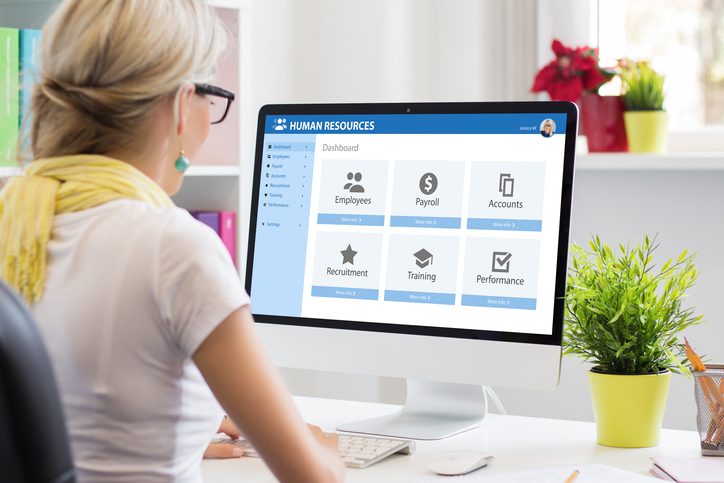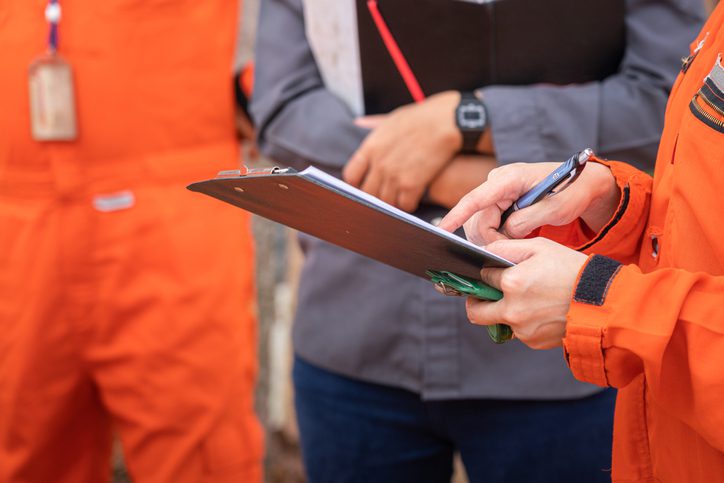Is Your HR Tech Stack Helping or Hindering Compliance?
Written by Cathryn Newbery, head of content at Ciphr, a leading UK-based HR software provider
Health and safety (H&S) is often regarded by organisations as being the responsibility of dedicated H&S teams, when, in reality, it’s everyone’s shared responsibility to make sure people are safe, healthy and happy at work.
There is a significant opportunity for H&S professionals to work alongside their HR colleagues to create a better, safer working environment – leveraging HR teams’ expertise in communications, change management, stakeholder management, and managing multigenerational workforces – to create a true health and safety culture.
Technology is another area where there are considerable possibilities for HR and health and safety professionals to join forces to create a better experience for employees, reduce their teams’ H&S admin, create better metrics around health and safety, and make safety part of daily working life. Here’s how organisations can leverage their existing HR tech stack to make it easier to achieve their health and safety goals.
What is HR software?
HR software enables HR teams to carry out essential functions and tasks electronically, with some degree of automation, and to store important, often sensitive, information about their employees. Organisations use HR software to streamline HR processes and make these processes easier to manage.
What is an HR tech stack?

The HR tech stack is all the people-related technology that an organisation uses, which is typically integrated with central HR software. This software will be the lynchpin of the HR tech stack; it will be the single source of truth for critical information about employees (such as job and pay records, and personal details), and enable a two-way data flow between that system and any other systems that are part of the stack.
An HR tech stack, at a minimum, will usually include central HR software and payroll software. Organisations will often add other applications, such as recruitment solutions, time and attendance software, and a learning management system to this HR tech stack.
It’s useful to think about the technology your organisation uses as a ‘stack’, rather than individual components, because:
- These systems should be integrated to enable data to flow seamlessly and securely between the applications, so information is always up to date (with minimal manual effort).
- You want to avoid duplicating functionality across the different systems.
- You can start to think about how employees ‘experience’ your systems as a whole, rather than as separate applications.
- You can join this set of people-related systems with other software in your organisation that may not have been typically part of the HR tech stack, such as health and safety software, finance systems, and data visualisation tools such as Microsoft Power BI.
- Taking a holistic view of your systems will help your organisation better understand which tools are working, which you need to decommission, and what new solutions you might need to procure.
How is HR tech relevant to health & safety?
Health and safety has two key cross-overs with HR concerns: compliance and ongoing training. Combining HR tech and health and safety software can help both functions achieve their goals more quickly and efficiently.
Modern HR software – such as Ciphr HR – that integrates with other apps in an organisation’s tech stack will serve as the ‘single source of truth’ for your people data. You’ll want to integrate it with your health and safety solution so you have up-to-date staff records and absence information. You’ll be able to use the HR software’s reporting function to measure important results – such as safety-related absences – and to understand how efforts to improve your organisation’s safety culture are affecting staff performance and retention.
Your HR software may also store records about employee training (although, such information typically sits in an integrated, specialist learning management system), which, again, you can link to your H&S solution to measure compliance rates and the impact of training on health and safety metrics such as incidents and near misses.
5 ways HR tech supports better health & safety compliance
Let’s dive into the specifics of how HR technology can help your organisation achieve better health and safety compliance.
1. It helps you keep accurate and secure employee records
There’s inherent risk in keeping important employee and worker data in multiple, disconnected systems. Data will become out of date; transferring data between systems will be manual and labour intensive; and there’s a greater risk of data security breaches.
Integrating your safety-related solutions with your central HR software (and, therefore, the rest of your organisation’s HR tech stack) will ensure that data in all systems is always up to date, accurate and consistent. You’ll be in a better position to ensure data is secure and stored in accordance with the GDPR and other data protection standards.
HR systems that give employees access to their own personal data empower people to keep their information – such as next-of-kin and line manager contact details – up to date and accurate. This information will be critical in the event of an emergency. With an HR system that staff, line managers, HR and health and safety teams can access via any internet-connected device, any time, you have peace of mind that this data will be on hand when you need it most.
2. It enables you to monitor the acceptance of health & safety policies
How do you confirm that workers have read, understood, and accept your health and safety policies? Many organisations simply don’t track this information; they issue important documents through a site such as SharePoint or Yammer, and assume that employees will refer to them when they need to.
HR software, such as Ciphr HR, includes policy acceptance tools that enable individuals to log into their self-service HR portal, and read and access the most recent company policies whenever they need to.

If you need to issue an update – or confirm that new starters agree to abide by the policy – simply load the new file once in the admin area, and issue the policy as an update to all relevant people. They’ll be notified that an updated policy is available and that they must download it and confirm that they have read and understood it. It’s easy to pull off a report that tells you how many people have done so – enabling you to monitor compliance rates. This information may also be useful for audit purposes, and, if necessary, as evidence that an employee had agreed to comply with health and safety protocols.
A modern HR system may also include a ‘checks’ area, which invites employees to fill in a series of questions related to, for example, risk assessments, or their home working setup, and submit evidence as required. These ‘checks’ can be set to expire, and for employees to be required to complete them on a periodic basis (with automatic notifications reminding them to do so). These checks can also be used to record information such as next-of-kin contact information, and compliance checks such as DBS or right to work checks. Administrators can easily see which checks are due or expired, and report on checks’ details by worker or category of check.
3. It reduces duplicate data entry and admin time
We’ve already discussed how integrating HR software and safety systems will help you to make your data more secure and accurate.Setting up automated data flows will also reduce the amount of manual work your team has to complete, freeing them to work on other, more important tasks. At a time when workloads are high, and budget to hire extra staff can be hard to come by, don’t underestimate the potential positive impact of being able to work more effectively.
4. It improves the onboarding experience for new starters
A new hire’s first weeks and months are critical for a successful career at your organisation. Get them off to the best-possible start by choosing HR software that can support digital pre-boarding – sharing information through a secure portal, before their first day, on anything from the company’s mission and goals, to floorplans, emergency procedures and safety policies. You can also use the onboarding platform to capture information about additional needs, and require them to complete compliance training.
5. You can use it to report on key metrics
One of the major benefits of an integrated HR tech stack – which includes health and safety solutions – is your organisation’s ability to report holistically on important metrics, and be able to understand how interventions (such as training) might affect areas such as absence, near misses, and performance. Depending on how your HR system is integrated with your health and safety software, and with your learning management system (LMS), you might also be able to report on incident trends and training completion rates through your HR software.
It’s difficult to compile such reports accurately and quickly if your systems are disconnected and you rely on putting together reports in Excel manually. As the old adage goes, ‘you can’t manage what you can’t measure’ – so if you’re struggling for visibility of your health and safety results, investigate the potential for integrating your solution with your central HR platform.
Collaborative technology
It makes good business sense for health and safety and HR teams to collaborate on their joint goals – so it makes just as much sense that the technology they use also joins up. Linking your health and safety solution with your HR tech stack will generate time efficiencies, improve data accuracy, and give you more insight into organisational performance. If you want to find out how HR software provider Ciphr can help you create a better HR tech stack, visit ciphr.com.




